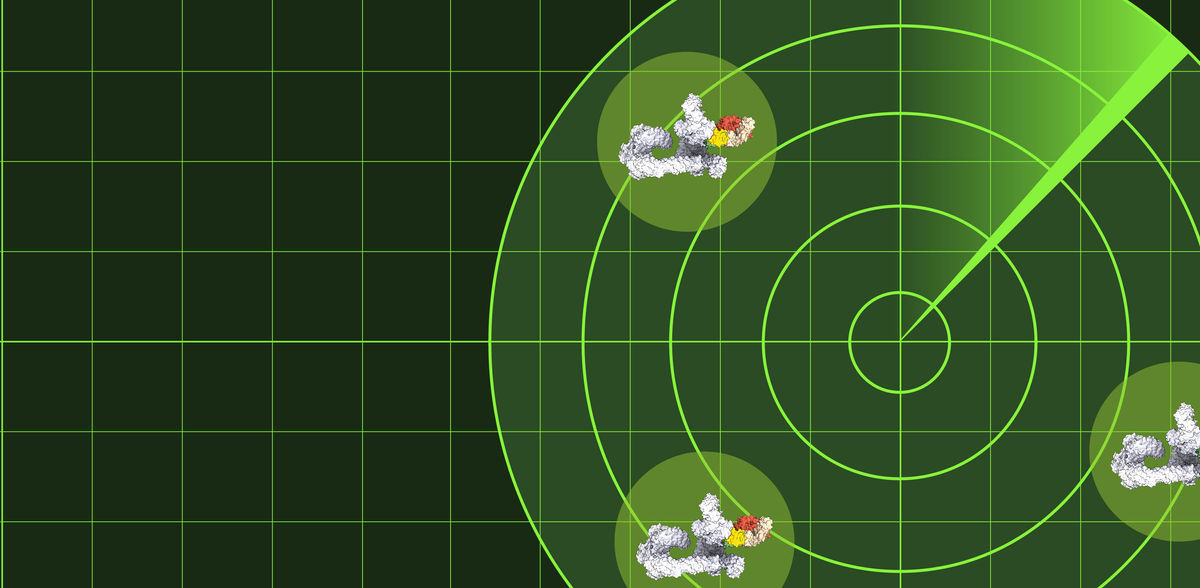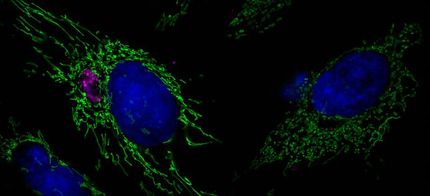New "radar" detects active cellular destroyers
Study provide an unprecedented look at the actors involved in the dynamic changes of our protein balance
Advertisement
Our cells have a fleet of 300 molecular machines, called cullin-RING ligases, or "CRLs" for short, that each is capable of triggering destruction of specific proteins for the well-being of our cells. However, most proteins are needed, therefore only those that block newly required cellular paths or that are toxic should be destroyed. The destructive potential of CRLs is tightly controlled. CRLs are switched on only temporarily, when needed. Researchers at MPI of Biochemistry and University of Waterloo have developed a new way to detect those CRLs in the fleet that are "on”, which reveals the CRLs deployed to solve cellular stresses and to perform the actions of some anti-cancer drugs.
Cells in the human body must adapt their protein balance to certain situations, such as the availability of iron or an infection. These adaptations occur through a complex process, in which proteins that are no longer needed or that are toxic are tagged for destruction by attaching a small protein called ubiquitin to them. This marking of a protein for destruction by tagging with ubiquitin is carried out by Cullin-RING Ligases, or "CRLs" for short. Therefore, CRLs can be considered as "destroyers" of specific protein molecules.
Overall, the CRLs are the largest collection of ubiquitin tagging machines, with over 300 members. First author Lukas Henneberg explains: "You can imagine that the 300 different CRLs inside a cell are like a fleet of destroyers, each of which would be able to lock onto a different target. If a cell is exposed to an increase in iron or to infectious bacteria, the proteins that would further increase iron to toxic levels or that would prevent the immune response from curing the infection must be destroyed. Such proteins are targeted by the CRL destroyers." But which of the 300 different CRLs are involved in adapting to many different cellular conditions is unknown, because up until now it has been challenging to detect which specific destroyers in the fleet are switched on at any given time.
Which Cullin-RING ligase molecular machines are active and when?
The fleet of CRLs essentially sails around in the sea that is the inside of the cell, with each one individually awaiting for a signal that it is needed. When the signal occurs, the needed CRL is temporarily switched on by attachment of another protein, called NEDD8. As soon as the destructive action of the CRL is no longer needed, the CRL is turned off by removal of NEDD8.
The researchers from the laboratories of Brenda Schulman, Max Planck Institute (MPI) of Biochemistry, and Sachdev Sidhu, University of Waterloo, have developed the first of a two-step method to detect which CRLs are attached to NEDD8, and thus are switched on.
They produced a synthetic antibody recognizing CRL-molecular-machines attached to NEDD8. The researchers determined a crystal structure, essentially a 3D molecular photograph, showing how the antibody can capture NEDD8 attached to almost all CRLs, only when a CRL is switched on to allow ubiquitin tagging of proteins to be destroyed. Thus, the synthetic antibody is an activity-based probe, or a “molecular radar”, that can detect which CRLs are activated to tag their target proteins for destruction.
The scientists in the departments of Brenda Schulman and Matthias Mann at the MPI of Biochemistry then developed the second step of the new method to find out which ones of the entire fleet of CRLs are switched on under normal cellular conditions, and which are switched on to adapt to changing cellular needs. The CRL molecular machines bound to the antibody, i.e. the active ones, were removed from the cells and collected in order to use state-of-the-art mass spectrometry to measure which and how many CRLs were active in the cells at a specific point in time.
Cullin-RING ligases in pharmaceutical medicine
In the current study, the authors could identify which CRLs are turned on in response to iron, and which are turned on by cellular signs of inflammation. The authors also studied CRLs that are turned on for the action of so-called "degrader" drugs. Degrader drugs are therapies that cause a CRL to target a disease-causing protein for destruction. For now, degrader drugs are used to treat some cancers, although the concept is being investigated for other diseases. The new method showed that the available amount of certain CRLs varies in different cell types, which influences the effectiveness of the degrader drugs. The more of the CRL "destroyer" already switched on in a cell, the faster a degrader molecule can cause the disease causing protein to be eliminated.
Cullin-RING ligases and our immune system
The researchers also teamed up with Peter Murray's laboratory at the MPI of Biochemistry to study the active CRLs in cells called macrophages. Macrophages are specific types of cells that our immune system relies on for different healing functions. Comparing the active CRL molecules of macrophages specialized for fighting bacteria with those of macrophages specialized for wound healing revealed clear differences that suggest the types of adaptations required for macrophage cells to do these very different functions.
The findings of this study provide an unprecedented look at the actors involved in the dynamic changes of our protein balance and their involvement in pathophysiological states, which may guide the use of CRLs in the development of new therapies in the future.
Original publication
Lukas T. Henneberg, Jaspal Singh, David M. Duda, Kheewoong Baek, David Yanishevski, Peter J. Murray, Matthias Mann, Sachdev S. Sidhu & Brenda A. Schulman, Activity-based profiling of cullin–RING E3 networks by conformation-specific probes. Nature Chemical Biology, August 2023






















































